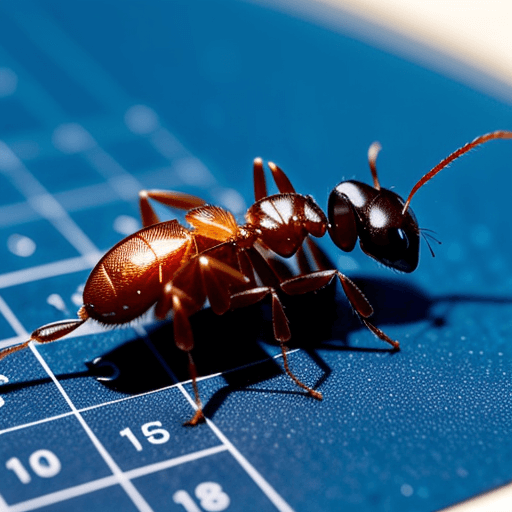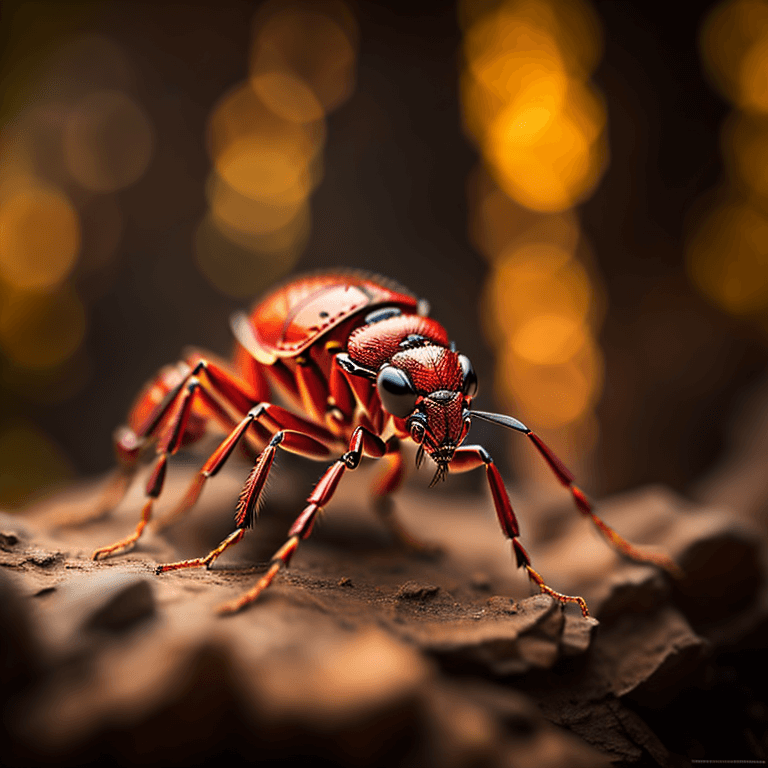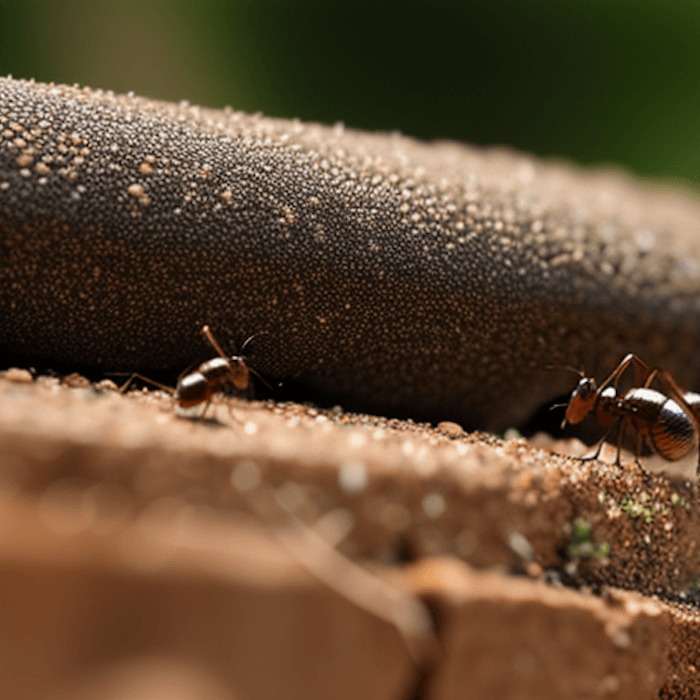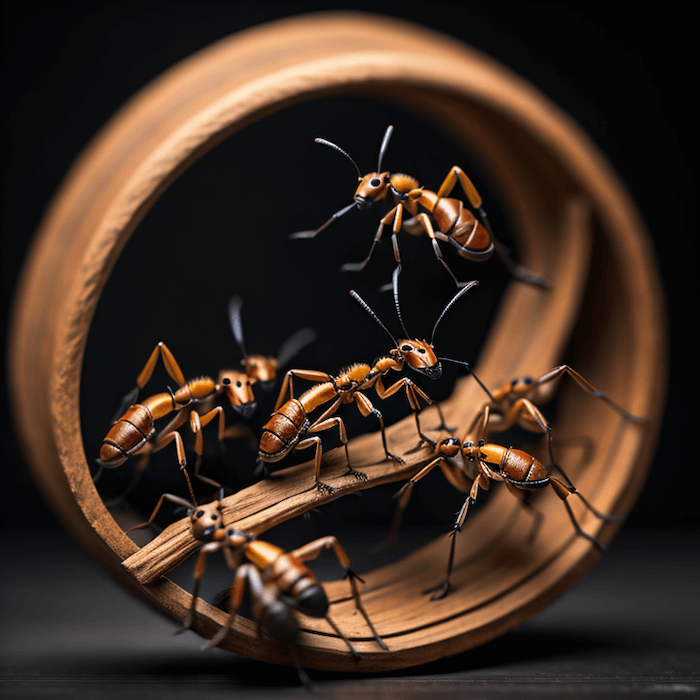Do you know how much an ant weighs?

Estimates for how much 7 common Ant Species may weigh:
- Carpenter ants – 5-15 mg or .00017-.00052 oz – One of the largest common ants. Minor workers weigh around 5 mg while major workers can reach 15 mg.
- Fire ants – 1-5 mg or .000035-.00017 oz – Smaller but very numerous ants. Workers range from 1-5 mg depending on the colony size.
- Pharaoh ants – 0.5 mg or .000017 oz – Tiny ants that thrive by having huge colonies. Individuals weigh less than 1 mg.
- Argentine ants – 2-3 mg or .00007-.0001 oz – Very small invasive household ant. Each worker is 2-3 mg.
- Bull ants – 8-12 mg or .00028-.00042 oz – Large aggressive ants found in Australia. Workers weigh 8-12 mg on average.
- Harvester ants – 5-7 mg or .00017-.00025 oz – Found in arid climates gathering seeds. Average 5-7 mg.
- Jumping ants – 1-3 mg or .000035-.0001 oz – Specialized ants with the ability to jump. They weigh only 1-3 mg.
The smallest ant species may only weigh around 0.5 mg while the largest can surpass 15 mg.

But most common householder ant species range from 1-7 mg per individual worker ant. The total biomass of an entire ant colony can be massive.
How much does an ant weigh?
So, how much does an ant weigh?
It really depends on the size and type of ant.
The average ant weighs about 1/10th of a gram, but some types can weigh up to 2 grams.
Have you ever wondered how much an ant weighs?
The average ant weighs between 1 and 5 milligrams.
That means that an ant weighs about as much as a penny!
Of course, there are some ants that weigh more than others.

- For example, the red fire ant can weigh up to 50 milligrams.
- But even the heaviest of ants is still pretty small!
- So the next time you see an ant, remember that this tiny creature is actually quite fascinating.
How much does an ant weigh in ounces?
The average adult ant weighs in at about one-tenth of an ounce.
However, there is a great deal of variation among different species of ants.
For example, the red fire ant typically weighs between 0.04 and 0.1 ounces, while the much larger bullhorn acacia ant can weigh up to 1.4 ounces.
- Given their small size, it is perhaps not surprising that ants are able to lift objects that are many times their own body weight.
- In fact, some species of ants can carry loads that are more than 50 times their own body weight.
This allows them to move food and other materials long distances, which is essential for the survival of their colony.
Which ant weighs more than 1 gram?

The world’s heaviest and is the queen of the African driver ants.
She can weigh up to 2 grams, making her more than twice as heavy as the average worker ant.
The African driver ant is a member of the Formica species, which includes more than 12,000 different types of ants.
Worker ants are considerably smaller than the queen, weighing in at only 0.5 grams on average.
However, even the largest worker ant is still dwarfed by the queen.
African driver ants are found throughout sub-Saharan Africa, where they live in enormous colonies that can number in the millions.
- The colony is headed by a single queen, who mates with a small number of drones.
- The workers are all sterile females who spend their lives foraging for food and caring for the young.
While they are not capable of reproducing, their enormous size makes them well-suited for their role as protectors of the colony.
Which types of ants weigh the most/least and why is that so?
Among the many types of ants, there is great variation in size.

For example, the largest ant in the world is the red bull ant, which can grow up to 2 inches long.
By contrast, the smallest ant is the dwarf olive ant, which averages just over 1/8 of an inch in length.
But size isn’t the only factor that determines an ant’s weight. The species’ diet and body composition also play a role.
For instance, carpenter ants are typically larger and heavier than other types of ants because they eat wood, which is rich in calories and fiber. In comparison, leaf-cutter ants are relatively light because they subsist on a diet of mostly plants and insects.
So while there is no definitive answer to the question of which type of ant weighs the most or least, it is clear that a variety of factors can influence an ant’s weight.
How does the weight of an ant vary depending on the type of ant?1
Ants are among the smallest insects, but there is considerable variation in their size.

- The smallest ants are just a few millimeters long, while the largest can be over half a centimeter in length.
- This difference in size is reflected in their weight as well.
- The lightest ants weigh less than a milligram, while the heaviest ants can weigh over 10 times that amount.
- There are several factors that contribute to this variation in weight, including the type of ant and its role within the colony.
For example, worker ants are often smaller and lighter than their queen, who may be many times their size.
In some species of ant, the males are also much larger than the females.
However, the most significant factor influencing an ant’s weight is its diet.
All ants eat small insects or other arthropods, but some species also feed on honeydew or other sugary substances.
These extra calories help to fuel their high metabolism and can cause them to put on weight quickly.
What are some factors that can affect the weight of ants?
There are a variety of factors that can affect the weight of ants.
- One is the type of ant species.
- Some ants are naturally heavier than others.
- Another factor is the ant’s age.
- Older ants tend to be heavier than younger ones. Ants also vary in weight depending on what they ate recently.
- If they have just eaten a large meal, they will be heavier than if they haven’t eaten anything.
Finally, the environment can also impact an ant’s weight.
If it is hot outside, ants may lose water and become lighter. If the environment is cold, ants may put on extra fat to insulate themselves and become heavier.
All of these factors can affect the weight of ants.
So the next time you see an ant, remember that this tiny creature is actually quite fascinating.
Article Sources
Jacks of Science sources the most authoritative, trustworthy, and highly recognized institutions for our article research. Learn more about our Editorial Teams process and diligence in verifying the accuracy of every article we publish.
- How does the weight of an ant vary depending on the type of ant? ↩︎
